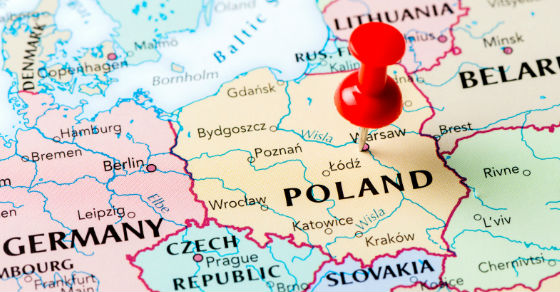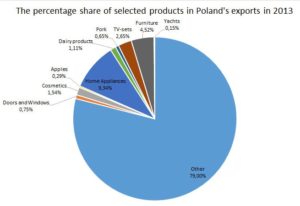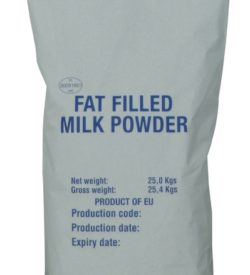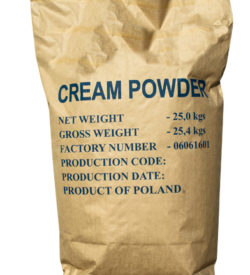Poland has emerged as an important and dynamic market since the country began its transition to democracy and a market-driven economy in 1989. With 38 million people, Poland is the largest market among the former Eastern bloc countries of Central Europe and shares borders with both “new” EU and “old” EU-15 countries. Poland became a member of the European Union (EU) in 2004.
Poland’s adoption of EU legislation has led to wide-ranging reforms in economic regulation and reduced government intervention in the private sector. Reforms in areas such as financial markets, company and competition law, accounting, and intellectual property rights have improved the environment for private business and boosted economic growth. Poland is now the sixth- largest economy in the EU and the largest among the ex-communist members of the European Union. Poland has been an active member of NATO since 1999, participating in joint peacekeeping activities in the region and elsewhere, including Afghanistan, and is investing in a major modernization of its military.
While the rest of Europe struggled with the global financial crisis, Poland experienced GDP growth of over 20 percent from 2008-2013. As predicted, Poland’s GDP growth slowed in 2013 as a result of the European debt crisis and Poland’s own fiscal consolidation efforts. However, expansion is expected to exceed 3% in 2014. Poland’s growth was in part due to the sizable resources from the EU structural and cohesion funds. Poland is the main beneficiary of these funds, receiving €68.7 billion from 2007 to 2013. The second round of EU funding for the years 2014-2020 will reportedly be used to drive continued infrastructure projects, to develop Poland’s energy industry, and to stimulate innovation.
In recent years many foreign companies have successfully sourced products and services in Poland. With its well-regarded workforce, proximity to major markets, and political stability, it is an excellent choice for foreign firms wishing to find their trade partners. Poland has also emerged as a favorable location for business processing centers, including call centers, shared services centers, and research and development operations.
Poland shipped US$540.0 billion worth of products around the globe in 2013 and it is the world’s eleventh-largest exporter. The latest figure represents 3% of worldwide exports estimated at $18.1 trillion.
Below is a list of Poland’s top 15 trade partners that imported the most Polish products by dollar value during 2013. Also shown is each import country’s percentage share of total exports from Poland.
1. Germany – US$50,512,648,000 (25% of total Polish exports)
2. United Kingdom – $13,132,615,000 (6.5%)
3. Czech Republic – $12,476,189,000 (6.2%)
4. France – $11,284,625,000 (5.6%)
5. Russia – $10,773,389,000 (5.3%)
6. Italy – $8,708,295,000 (4.3%)
7. Netherlands – $8,004,236,000 (4%)
8. Ukraine – $5,706,973,000 (2.8%)
9. Sweden – $5,536,571,000 (2.7%)
10. Slovakia – $5,315,546,000 (2.6%)
11. Hungary – $5,122,001,000 (2.5%)
12. Spain – $4,495,815,000 (2.2%)
13. United States – $4,462,884,000 (2.2%)
14. Belgium – $4,456,117,000 (2.2%)
15. Norway – $4,066,500,000 (2%)
Following are the products that feature prominently in Polish exports:
1. Machinery and equipment
2. Textiles and footwear
3. Metals and metal products
4. Construction products
5. Minerals and fuels
6. Chemicals
7. Agricultural products
8. Furniture
Top 10 Polish Export hits in 2014 are:
1. Doors and windows
2. Cosmetics
3. Apples
4. Household appliances
5. Milk Products
6. Pork
7. TV sets
8. Furniture
9. Yachts
10. Poultry








